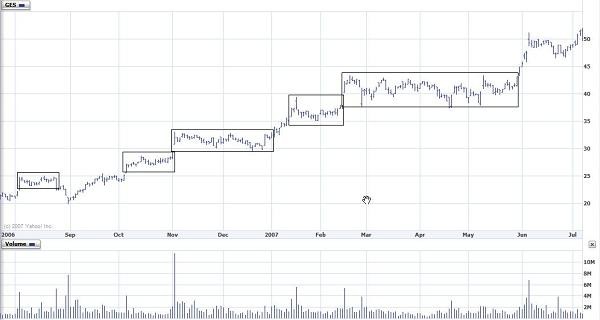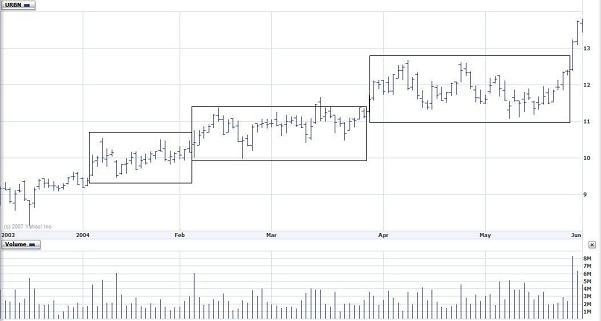Darvas Box Theory Options Strategy Iron Condor
Post on: 10 Июнь, 2015 No Comment

Iron Condor Spread
An Iron Condor is part of the spread family of options strategies. It consists of four separate options: 2 puts and 2 calls. The Iron Condor is a credit spread. which means you receive money (less commissions) when you go long. Thus, you are receiving money for nothing up front: it’s a nice fat loan from the short end that you may never have to pay back (see the payoff diagram below).
Basically, an Iron Condor is a bull put spread combined with a bear call spread. This means that you:
1) Buy (and sell) puts on the lower end of the strike price
2) Buy (and sell) calls on the upper end of the strike price
Think of it this way: You sell the neck and buy the wings. The ‘neck’ here is the plateau where maximum reward is achieved. The wings are your maximum loss points.
An example payoff diagram might look something like this:
As the graph above clearly shows, this particular example would make money at any price from K=140 to K=155. The maximum profit of $400 is achieved at 144 <= K <= 151. While this example shows a reward/risk ratio of 2, the true ratio is often less than 1 (due to the nature of the strategy). Even so, it is obvious that you are being paid money for nothing.

How is this possible? The two options you sold are closer to the money than the ones you bought. As such, you are expecting the underlying asset to remain in a certain range (in the example above, you are hoping for more than 140 and less than 155). If what you expect to happen actually happens, all the options expire worthless, and you keep the full credit. If the trade goes against you, your loss is the cost of assignment less the credit received (which is basically the difference in strikes minus the credit).
Using The Strategy
So, how can one take advantage of this seemingly free money? First, you should realize that this is not risk free. Depending on how you structure the trade, the neck can be very narrow, and thus your risk of loss is higher. However, if you stick to OTM options. the risk of assignment is mitigated somewhat. also try to stick with options with 30 days or less to expiration. That way, your time risk is lessened, plus you will have theta decay working for you.
I prefer to use this strategy with index options. Index options are not only super liquid, but also receive favorable tax treatment (at least in the US). Thus, one is able to find options for almost any strike, thereby allowing for lots of flexibility to structure a trade with acceptable reward/risk characteristics.














